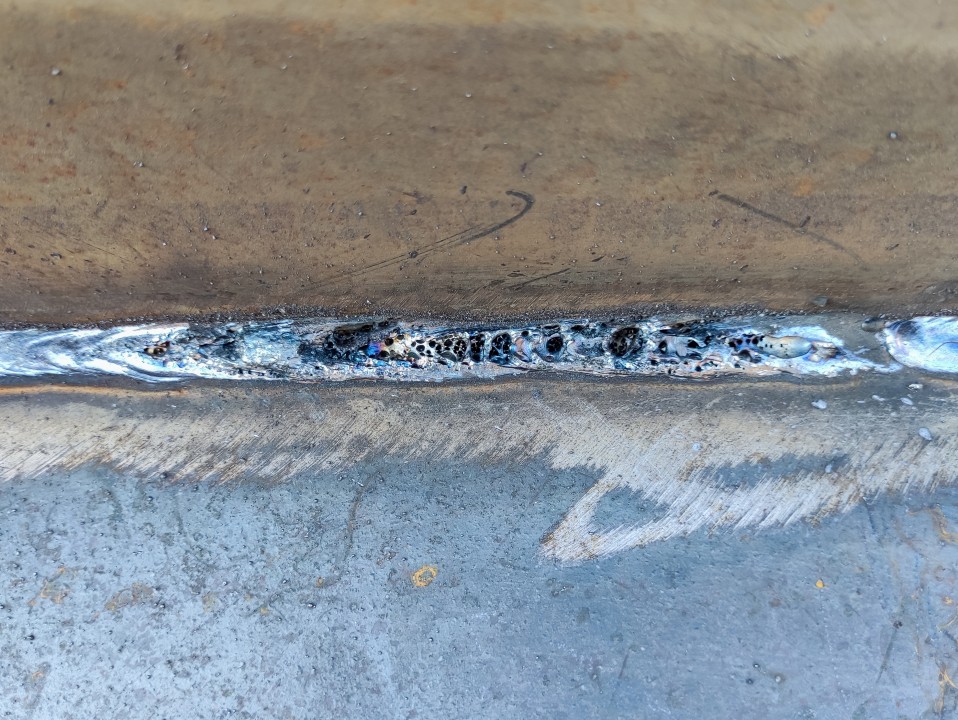Recognizing Porosity in Welding: Exploring Causes, Impacts, and Avoidance Strategies
Porosity in welding is a persistent difficulty that can considerably impact the quality and stability of welds. As specialists in the welding sector are cognizant, comprehending the causes, impacts, and avoidance methods connected to porosity is crucial for achieving robust and trustworthy welds. By diving right into the origin of porosity, examining its harmful results on weld quality, and discovering reliable prevention techniques, welders can enhance their expertise and skills to produce premium welds consistently. The elaborate interaction of elements adding to porosity calls for an extensive understanding and a proactive approach to guarantee effective welding results.
Typical Root Causes Of Porosity
Porosity in welding is mostly triggered by a combination of variables such as contamination, incorrect shielding, and insufficient gas protection throughout the welding process. Contamination, in the form of dust, grease, or rust on the welding surface area, develops gas pockets when heated up, bring about porosity in the weld. Inappropriate securing happens when the shielding gas, frequently used in procedures like MIG and TIG welding, is incapable to completely secure the molten weld pool from reacting with the surrounding air, resulting in gas entrapment and succeeding porosity. In addition, insufficient gas insurance coverage, commonly due to inaccurate flow rates or nozzle positioning, can leave components of the weld unguarded, enabling porosity to form. These variables jointly add to the development of spaces within the weld, compromising its honesty and potentially creating architectural concerns. Recognizing and attending to these typical reasons are critical action in stopping porosity and ensuring the top quality and strength of welded joints.
Impacts on Weld Top Quality
The existence of porosity in a weld can considerably endanger the general top quality and integrity of the bonded joint. Porosity within a weld creates spaces or dental caries that damage the framework, making it a lot more at risk to splitting, rust, and mechanical failure. These spaces function as anxiety concentrators, reducing the load-bearing capacity of the weld and enhancing the chance of premature failure under used stress. On top of that, porosity can additionally offer as prospective websites for hydrogen entrapment, more worsening the deterioration of the weld's mechanical buildings.
In addition, porosity can impede the effectiveness of non-destructive testing (NDT) techniques, making it testing to spot other flaws or suspensions within the weld. This can lead to considerable security worries, particularly in critical applications where the structural honesty of the bonded parts is paramount.

Avoidance Techniques Summary
Offered the damaging impact of porosity on weld quality, reliable avoidance techniques are essential to maintaining the architectural integrity of Find Out More welded joints. In addition, choosing the suitable welding parameters, such as voltage, current, and travel rate, can assist minimize the threat of porosity development. By including these avoidance techniques right into welding techniques, the occurrence of porosity can be dramatically decreased, leading to more powerful and extra reliable bonded joints.
Relevance of Correct Shielding
Appropriate protecting in welding plays a vital function in stopping climatic contamination and making sure the integrity of welded joints. Protecting gases, such as argon, helium, or a combination of both, are frequently made use of to shield the weld pool from reacting with components airborne like oxygen and nitrogen. When these responsive aspects come into contact with the warm weld swimming pool, they can cause porosity, resulting in weak welds with minimized mechanical properties.

Poor shielding can cause different problems like porosity, spatter, and oxidation, jeopardizing the structural stability of the bonded their explanation joint. Sticking to appropriate shielding techniques is crucial to create premium welds with minimal issues and guarantee the durability and dependability of the welded parts.
Monitoring and Control Methods
Just how can welders successfully keep an eye on and regulate the welding procedure to ensure ideal outcomes and stop defects like porosity? By continually monitoring these variables, welders can determine variances from the ideal problems and make instant adjustments to avoid porosity development.

Additionally, carrying out proper training programs for welders is essential for monitoring and regulating the welding process efficiently. What is Porosity. Educating welders on the relevance of preserving consistent specifications, such as proper gas protecting and take a trip speed, can aid stop porosity problems. Routine analyses and certifications can additionally make sure that welders excel in tracking and controlling welding processes
Additionally, the usage of automated welding systems can boost monitoring and control capabilities. These systems can exactly control welding specifications, reducing the chance of human error and ensuring regular weld high quality. By combining innovative tracking technologies, training programs, and automated systems, welders useful source can efficiently keep track of and manage the welding procedure to minimize porosity flaws and achieve top notch welds.
Conclusion
